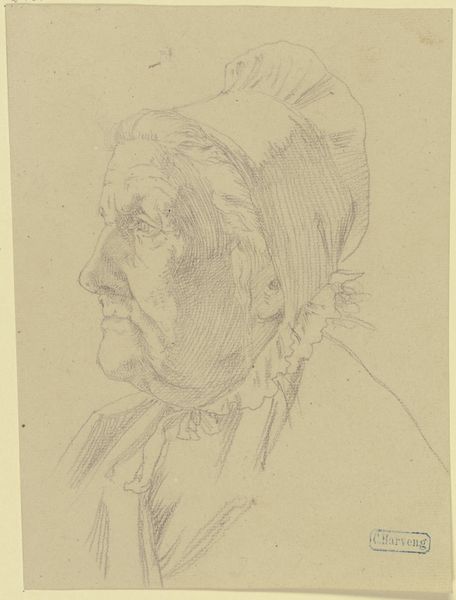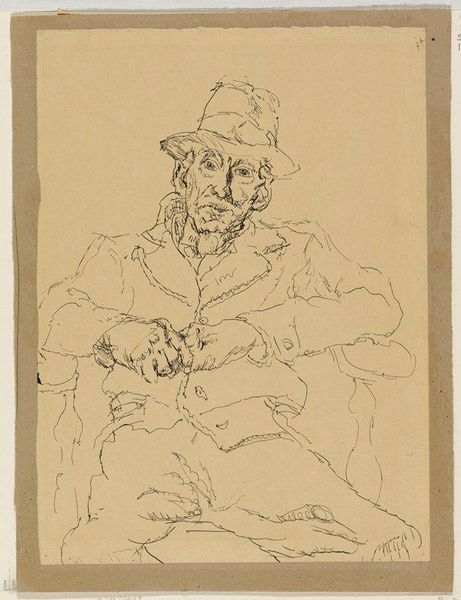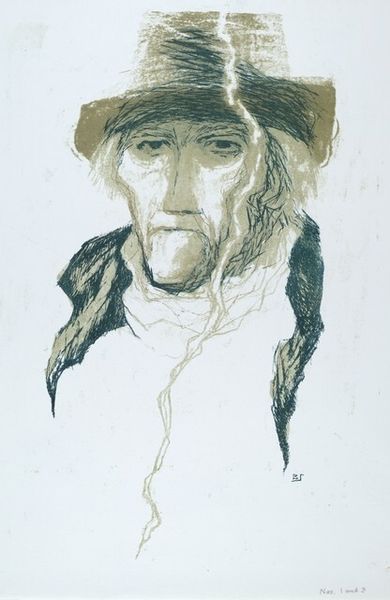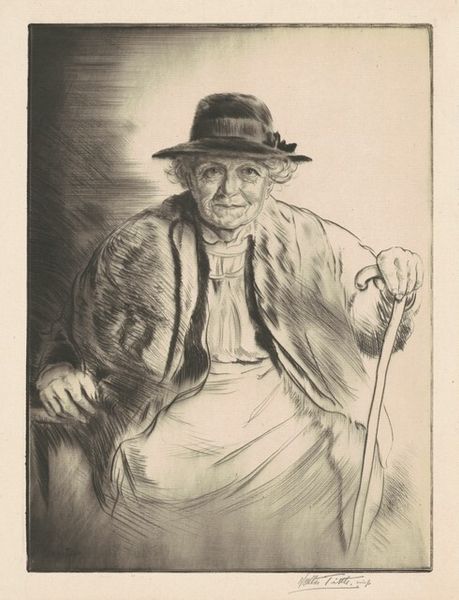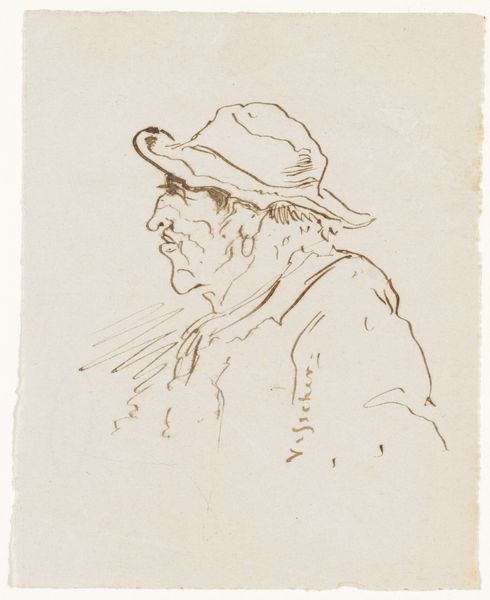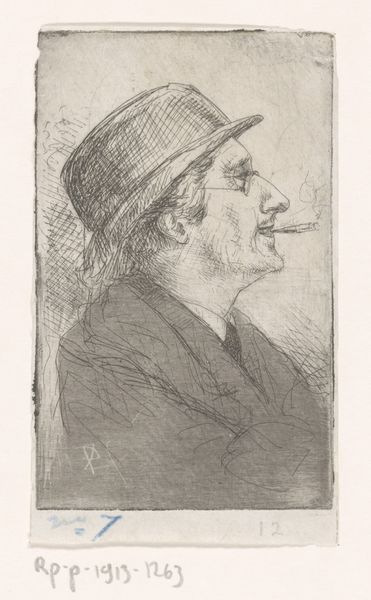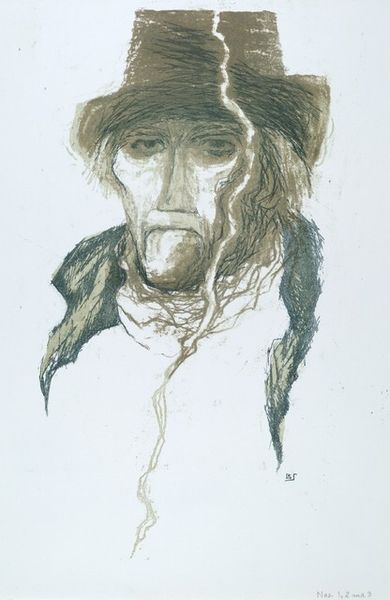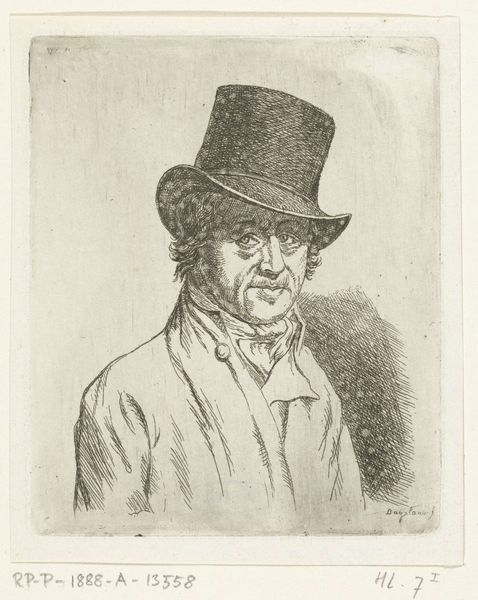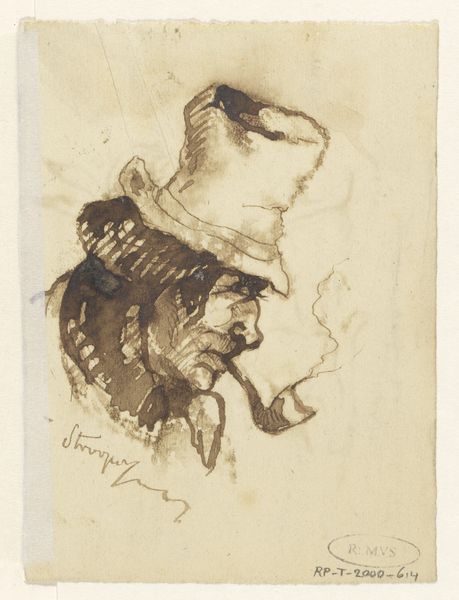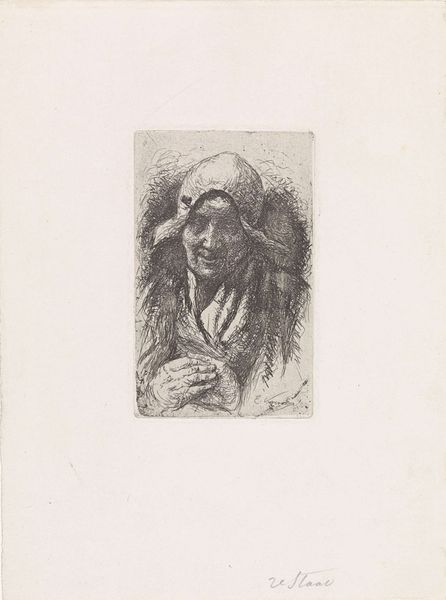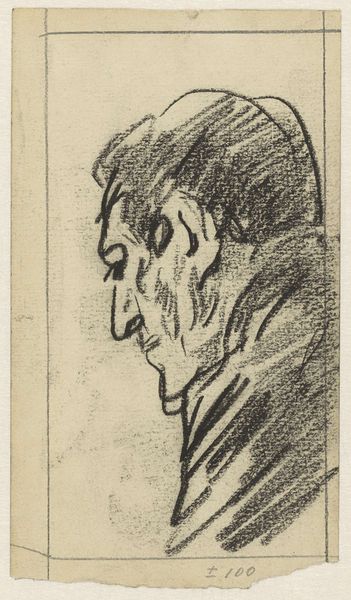
Copyright: Public Domain: Artvee
Curator: Leon Wyczółkowski’s "Bust of a Cracow Peasant," dating to 1901, offers an interesting case study in the power dynamics of representation within Polish society at the turn of the century. Editor: My first impression is one of melancholic strength; the colors, especially the blues around his face, seem to reflect a certain weariness. Curator: Precisely. Note the stylistic choices – Wyczółkowski employs pastel and colored pencil to depict this peasant, not as an individual, but as a symbol of regional identity amid larger sociopolitical shifts. His direct gaze carries both vulnerability and defiance, characteristic of marginalized groups claiming their space. Editor: I’m struck by the hat. Its somewhat awkward angle and the dark colors seem to be communicating something about the sitter's internal world, but the red trim feels contradictory and intentional. Is it to be read as a marker of pride, or perhaps rebellion? Curator: It certainly introduces a compelling duality. The colors, combined with the figure’s attire, hint at both belonging to and pushing against established rural norms. It reflects the complexity of navigating traditional roles when urbanization and modernization threatened long-held customs and class distinctions. Editor: Seeing how Wyczółkowski chose to portray the individual’s features so directly invites deeper inquiry into his social status and daily experiences within early 20th-century Krakow. Is this meant to dignify the peasant or further establish social difference by singling him out through art? Curator: Absolutely. The portrayal invites questions around representation, and challenges us to analyze how social perceptions affect individuals within specific temporal frameworks. Moreover, viewing Wyczółkowski through the lens of contemporary critical race theory would also question the position of power he holds as a artist, looking in. Editor: Reflecting on the bust's creation during a time of dramatic change encourages thought about how social and regional markers survive through artistic representations. The man’s figure seems representative of cultural persistence as well. Curator: Yes, exactly. Art pieces like Wyczółkowski's encapsulate the tension between external realities and lived experience and demand that we use theoretical approaches to analyze more completely the intersectional realities captured on this single sheet. Editor: It all prompts deeper understanding how lasting symbolism rooted within singular cultural identity is still relevant and visible today.
Comments
No comments
Be the first to comment and join the conversation on the ultimate creative platform.


